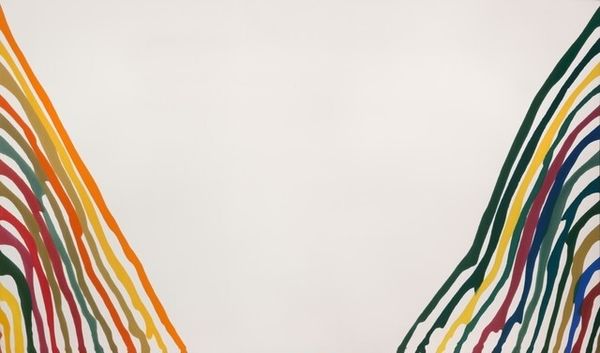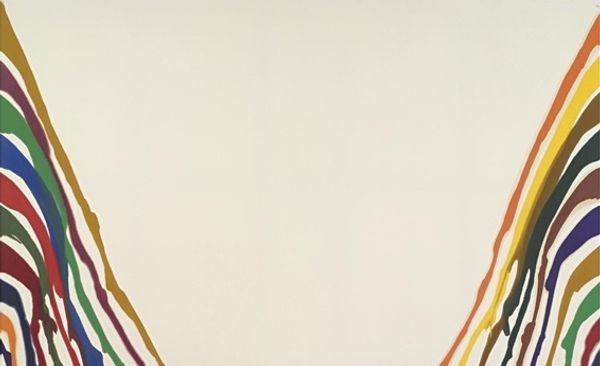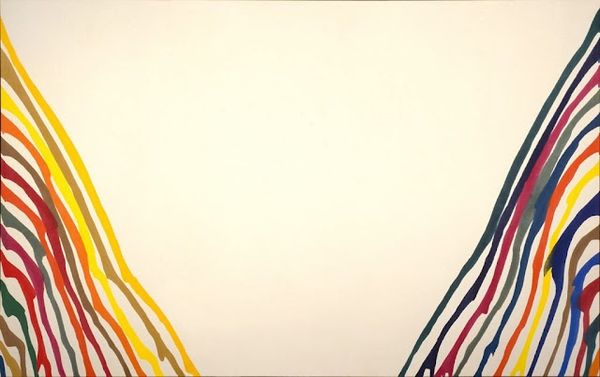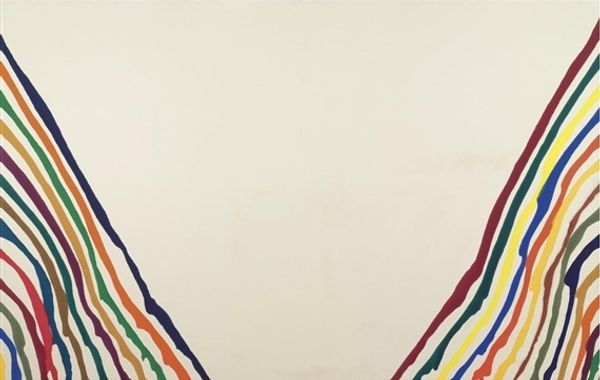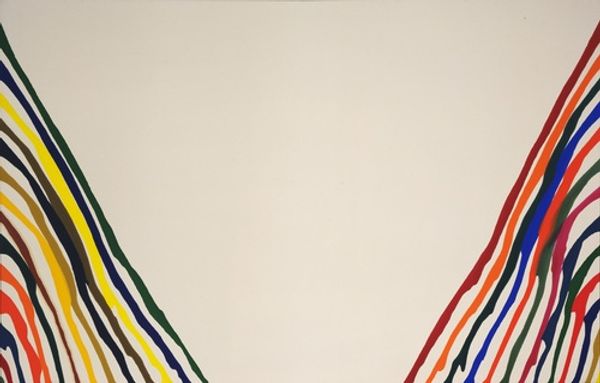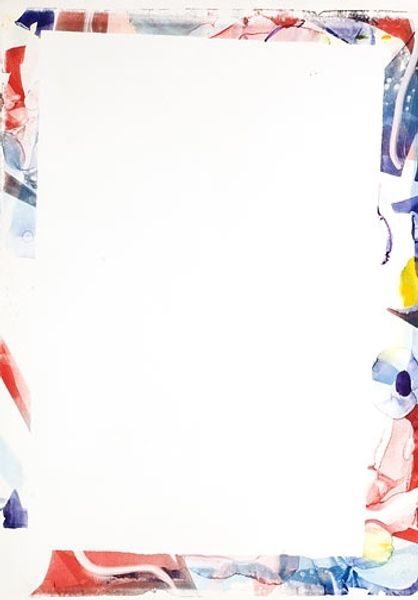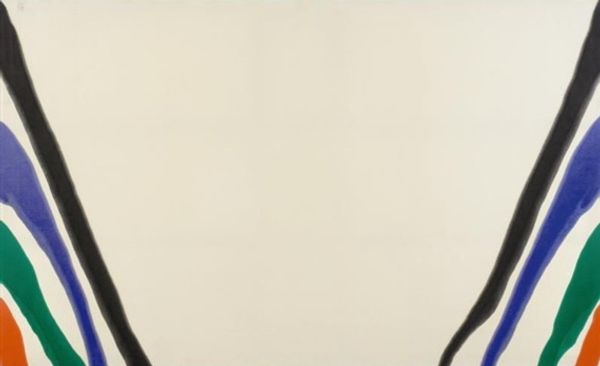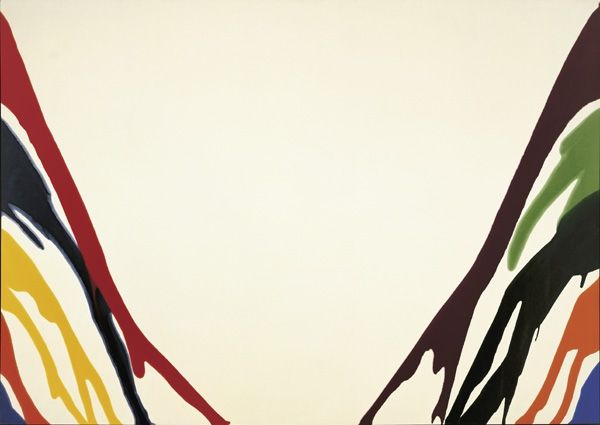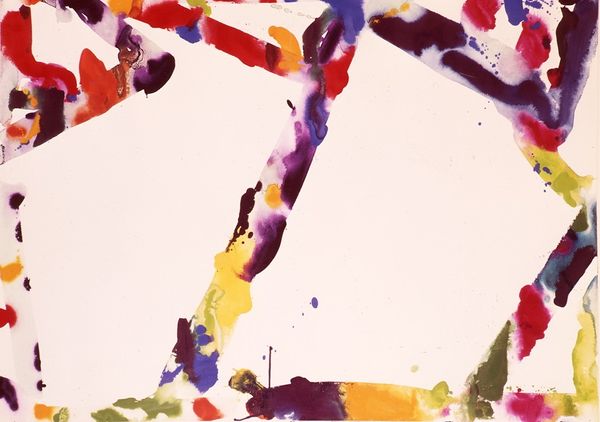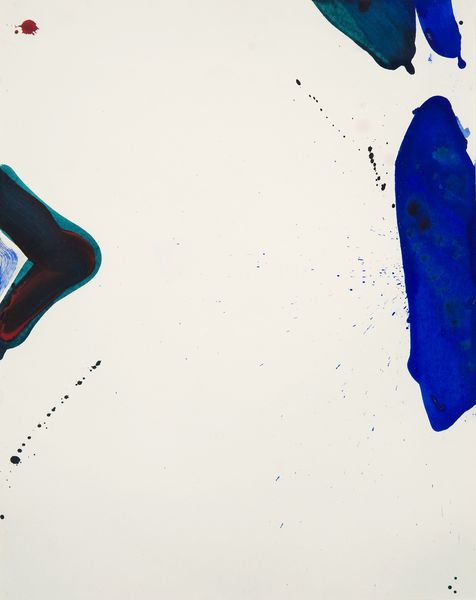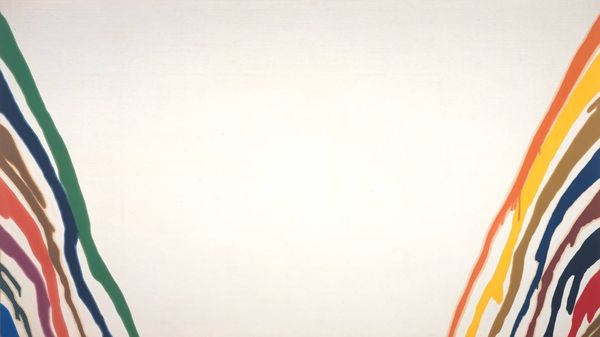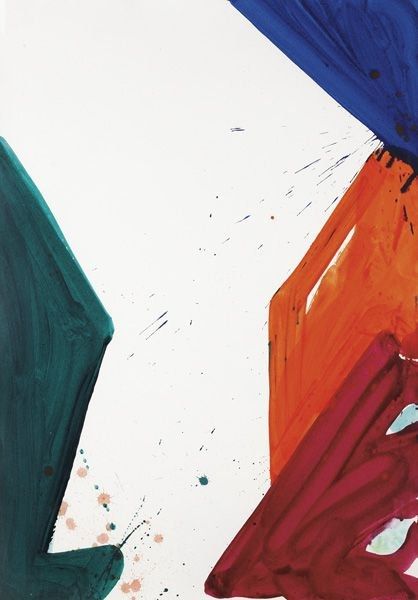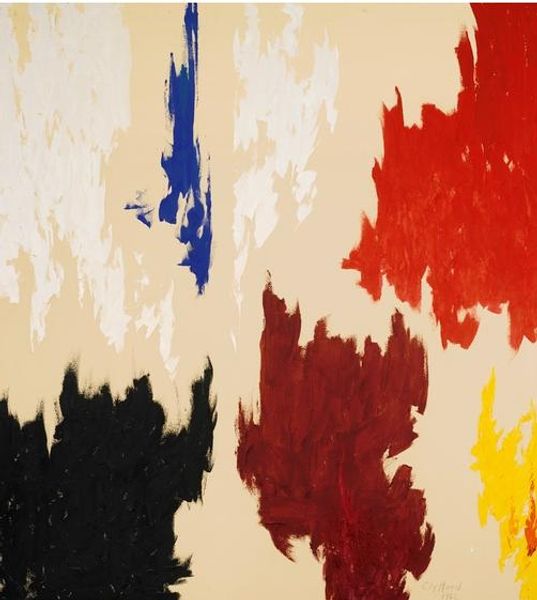
stain, acrylic-paint
#
abstract-expressionism
#
washington-colour-school
#
stain
#
acrylic-paint
#
form
#
geometric-abstraction
#
abstraction
#
line
#
modernism
Dimensions: 260.99 x 387.35 cm
Copyright: Morris Louis,Fair Use
Curator: Let’s turn our attention to “Gamma Delta” by Morris Louis, completed in 1960. It currently resides here at the Whitney Museum of American Art. Editor: What strikes me immediately is the feeling of almost suspended animation, or rather suspended motion. It's monumental but weightless. Curator: Louis was a key figure in Color Field painting, part of the broader Abstract Expressionist movement. Here, we see his signature use of thinned acrylic paint, staining the canvas rather than applying paint to it in the traditional sense. How might the concept of staining intersect with ideas of artistic labor? Editor: Absolutely. The process becomes crucial. The lack of traditional brushwork and the focus on staining the canvas brings us closer to understanding the materials. The poured, staining process suggests the relinquishing of some control by the artist. There's a collaboration with gravity and material properties that is highlighted, contrasting traditional modes of art production. Curator: And consider the social context of the '60s, and how the notion of the author, particularly a male artist, was being challenged. This process could be read as destabilizing the mythology of individual artistic genius. Also, I can't help but see the geometric composition within broader mid-century narratives about industrial production and its connection to class dynamics. Editor: That is a fascinating way to interpret the intentional removal of direct labor. The flat, unmodulated colors themselves could be a kind of ready-made element that mirror industrial, reproduced materials. Curator: It invites contemplation not just on what is shown but how it was brought into being and what its lack reveals about power and cultural status. The unpainted space is just as important as the washes. Editor: Thinking about it in terms of material presence makes the piece feel grounded and significant, especially in considering the means and social contexts behind it all. Curator: Indeed. "Gamma Delta" encourages a richer engagement with the materials and production beyond formal aesthetics. Editor: A truly insightful experience that shifts our perspective, leaving much to consider long after viewing it.
Comments
No comments
Be the first to comment and join the conversation on the ultimate creative platform.
